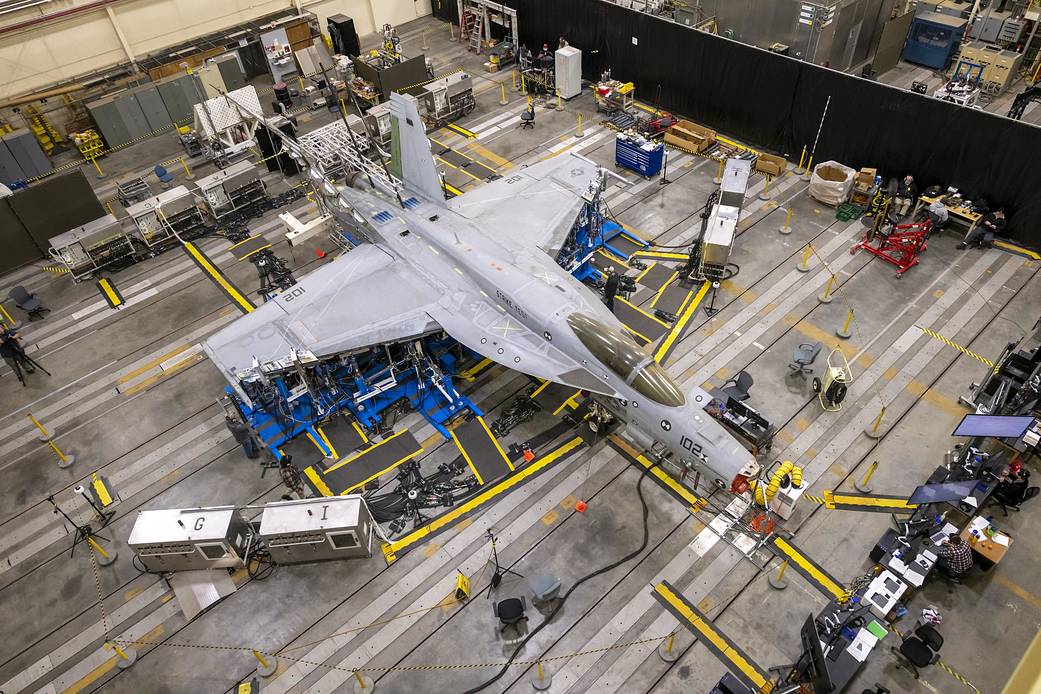压力测试超级大黄蜂的翅膀
Teams at NASA’s Armstrong Flight Research Center in Edwards, California, recently completed stress testing on the Navy’s F/A-18E Super Hornet aircraft from the Naval Air Systems Command (NAVAIR) in Patuxent River, Maryland. The Super Hornet is seen here in a top view from March 2022 while in a wing loading test configuration at Armstrong.
Understanding what stress, or strain, an aircraft can endure is critical to carrying out its intended mission. To better understand the aircraft’s capacity for strain, unique facilities can “load” the aircraft to specified stress points and document its performance. The test data resulted in the development of loads equations that calculate real-time loads experienced during flight testing, which can be compared to established design limits to ensure safety of flight and crew.
Currently, NAVAIR is using NASA facilities to restore the aircraft from its testing configuration by removing test equipment, reinstalling hardware, and the landing gear, and preparing it for a return to its test squadron.
Image Credit: Joshua Fisher
位于加利福尼亚州爱德华兹的NASA阿姆斯特朗飞行研究中心的团队最近完成了对来自马里兰州帕图克森特河海军航空系统司令部(NAVAIR)的海军F/A-18E超级大黄蜂飞机的压力测试。图为2022年3月在阿姆斯特朗进行机翼加载测试配置时的超级大黄蜂俯视图。
了解一架飞机能承受多大的压力或张力,对于完成其预定任务至关重要。为了更好地了解飞机的应变能力,独特的设施可以将飞机“加载”到指定的应力点,并记录其性能。根据试验数据,建立了计算飞行试验中实时载荷的载荷方程,并将其与既定的设计极限进行比较,以确保飞行和机组人员的安全。
目前,NAVAIR正在使用NASA的设施,通过拆除测试设备、重新安装硬件和起落架,并准备返回测试中队,将飞机从测试配置中恢复。
图片来源: Joshua Fisher

